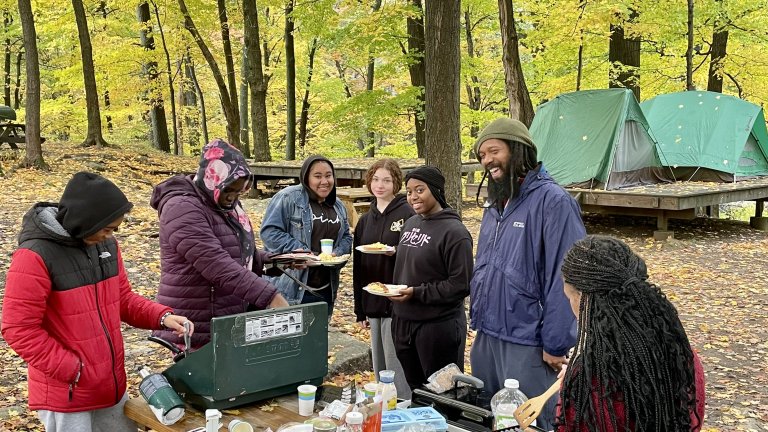
For nearly a decade, Common Ground’s Outdoor Leadership class has helped students build the confidence and skills they need to explore the natural world. Over the last two years, a grant from the EPA Healthy Communities program has helped strengthen this semester-long experience and develop its curriculum into something that could be shared beyond our small school community. Gammy Moses, an outdoor educator and youth development expert on Common Ground’s staff, worked together with Common Ground’s Lead Teacher for Curriculum & Instruction, Jeremy Stone, to take on this work. Together, they re-organized the course to focus squarely on individual and environmental health – allowing students to earn a health credit required from graduation by the time they finish the semester. They also deepened the course’s focus on environmental stewardship and leadership – recognizing that we need these students to protect and promote the health of these outdoor environments.
This practice toolkit shares more about the experience of the Outdoor Leadership course, and provides an entry point for educators who want to access key parts of the curriculum for this class. It was created by Gammy Moses, in collaboration with Jeremy Stone and Joel Tolman.
Part 1: Why Go Outside? Stepping Further & Further Beyond the Classroom
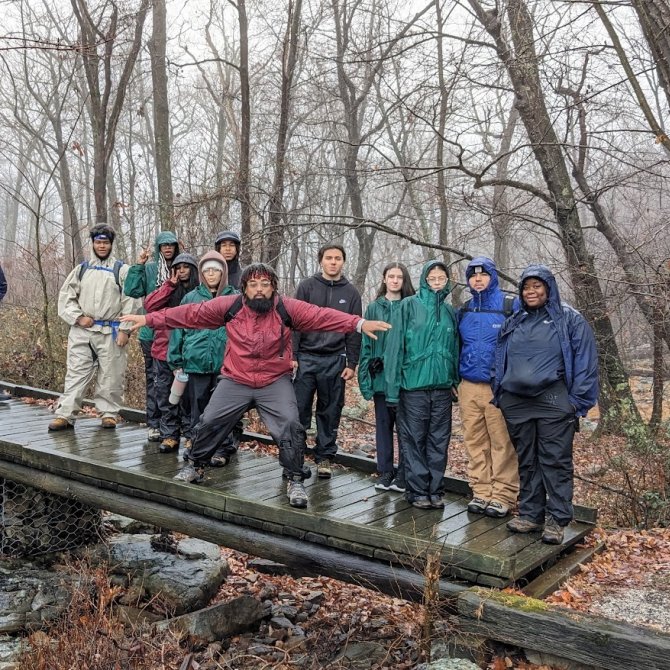
When students come to the Outdoor Leadership class, they have really varied experiences with being outside. For some it’s new to spend even 50 minutes outside under challenging weather conditions, and many haven’t yet learned about why outdoor experiences matter. So, the class starts by asking students a big question: Why do we go outside? We read from Last Child in the Woods. We look at the research on how being outside affects our physical well being. We learn about nature prescription programs, and about research on Forest Bathing (shinrin-yoku). We focus specifically on how clean, healthy outdoor environments affect the health of the community – so that students come to appreciate the importance of healthy environments.
As we are learning about the health benefits of outdoor experiences, students are trying it out themselves. Over the course of the semester, students experience a progression of outdoor experiences:
- We go outside for part of class -- first to picnic tables in a pavilion by our wetland, then to the Elm Realm in the woods of West Rock, where there's an outdoor classroom.
- Students choose and spent time at sit-spots outdoors for stress management and emotional health.
- Students lead outdoor games and activities, and in the process develop group-building and facilitation skills.
- We then do short hikes around the Old Oak Nature Trail, which Common Ground students built in the early days of the school.
- They move on to do a full-day hike in West Rock or Sleeping Giant State Park.
- They get hands-on practice with camping gear in the forest around the school.
- Then, they move onto a single overnight camping experience, which they plan and lead.
- Back on campus, they practice outdoor first aid skills on trails around the school and role-play leadership scenarios about dangerous or unsafe situations
- By the end of the fall class, students take on a winter cabin camping experience, where they get to cross-country ski and snowshoe, usually for the first time.
Many of these experiences are possible because of our partnership with the Appalachian Mountain Club (and its Connecticut chapter in particular), which provide access to facilities and gear that make these trips possible. We want students to learn to get outside on their own, too. So students have homework: go outside, and document the experience with photographs and writing. See the image gallery on the right for a step-by-step progression of these outdoor experiences.
One key measure of success is how much of the time we spend outside of the classroom. At the start of the course, it may be small – but by the end of the semester, our goal is that students are outside almost all the time.
Part 2: Healthy Outdoor Experiences, Healthy Outdoor Environments
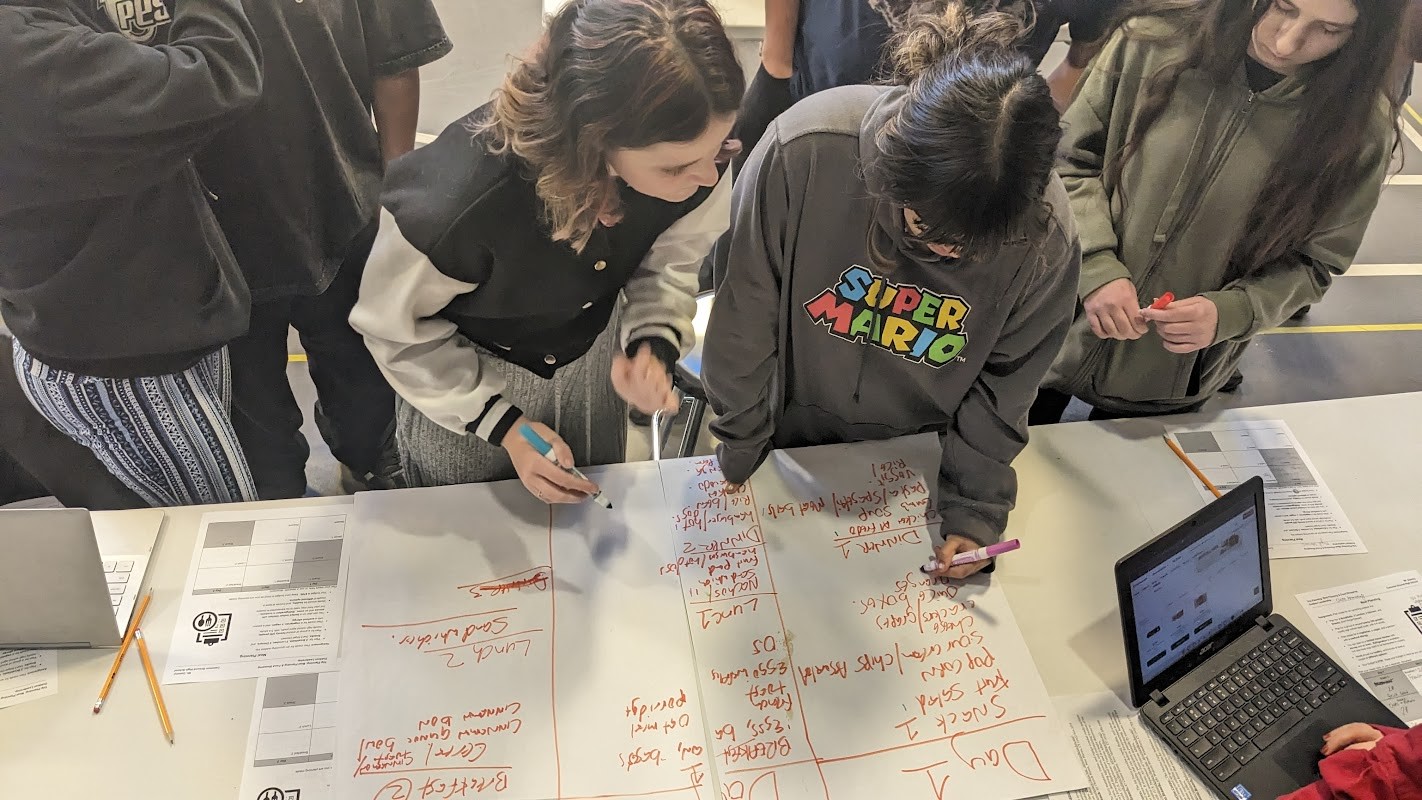
To take on these outdoor experiences, students need to learn how to be safe and healthy outside, and how to protect the health of the environment while they’re outdoors.
Once students have learned about WHY being outside matters, they can turn to the HOW. They learn about nutrition by planning healthy meals for these outdoor trips – in fact, they are responsible for planning nearly all the aspects of their outdoor trips. They set goals for themselves for physical activity and outdoor time, and check on their progress toward these goals. They also learn practical skills for outdoor safety and health: how to safely start a campfire, how to cook outside, how to build a shelter.
At the same time, these young people are learning how to protect the water, air, and land. They explore and apply Leave No Trace principles. They learn how UV radiation and air quality impact human health, and incorporate this information into their developing plans for a day hike and overnight camping trip. They read articles about micro-plastics and bacterial pollution in waterways, conduct a water quality audit of Wintergreen Brook, just across the street from Common Ground's campus, and learn how water quality impacts the choices they make while engaged in outdoor recreation activities.
Part 3: What do we do when things go wrong?
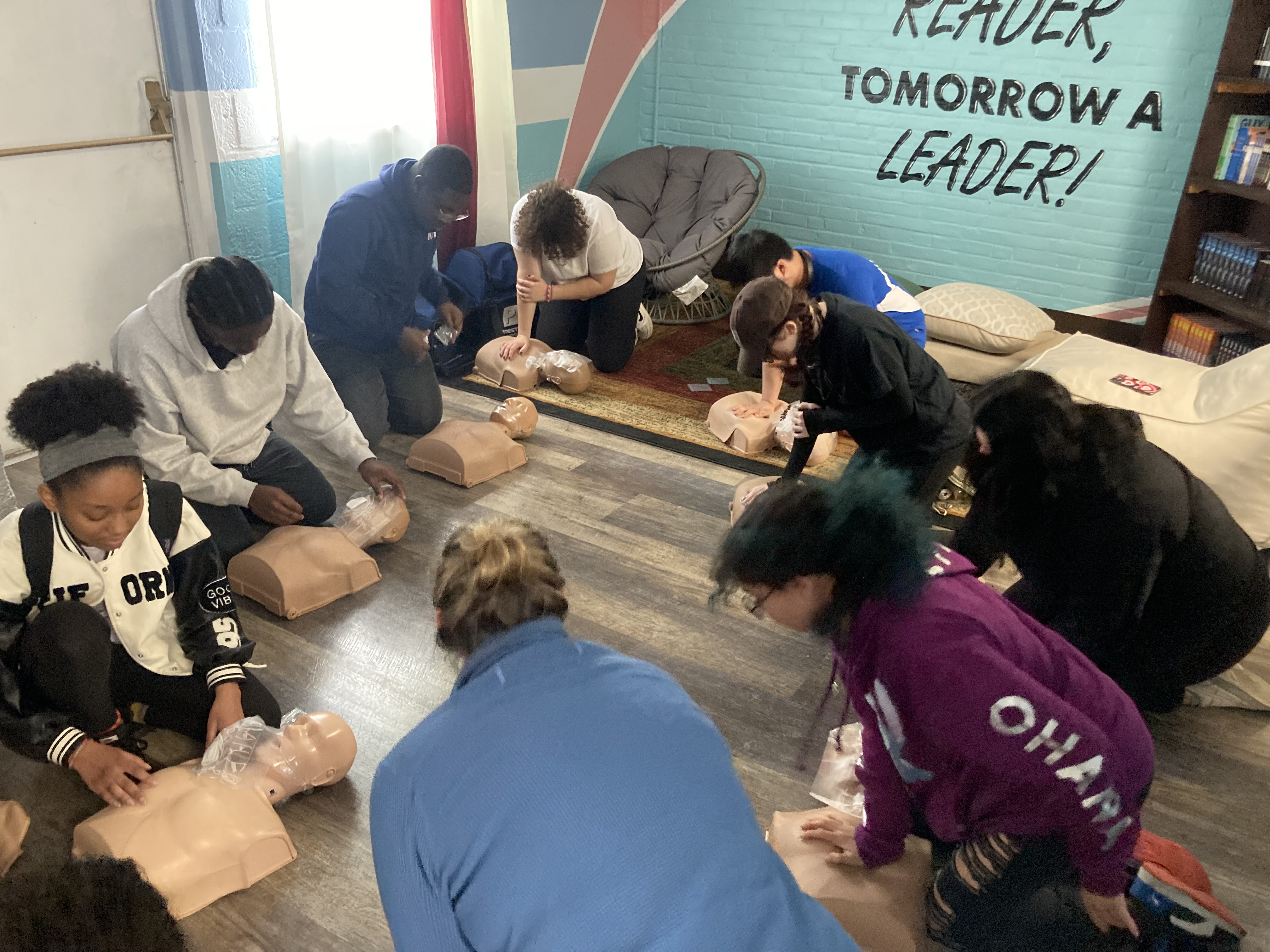
In the final part of the course, students learn how they can step up to protect their own health, and the health of the environment around them.
One tool for this is leadership scenarios – where students role play challenging situations, and apply their skills as leaders. They learn about disaster preparedness and response, which is an important part of the health curriculum for the class.
In this part of the class, students can actually earn their first aid certification – a valuable real-world credential for students interested in paid jobs as outdoor leaders. Thanks to a grant written by a Common Ground student to the State Department of Education, Common Ground has been able to partner with WildMed to offer full-day first aid/CPR certifications to outdoor Leadership students.
Students also apply their growing leadership and environmental understadning through stewardship projects on their campus -- finding and implementing solutions to pollution along Wintergreen Brook, caring for the Javier Martinez Wetland, helping to prevent erosion along the trails that they use.
Developing Effective, Reflective Outdoor Leaders
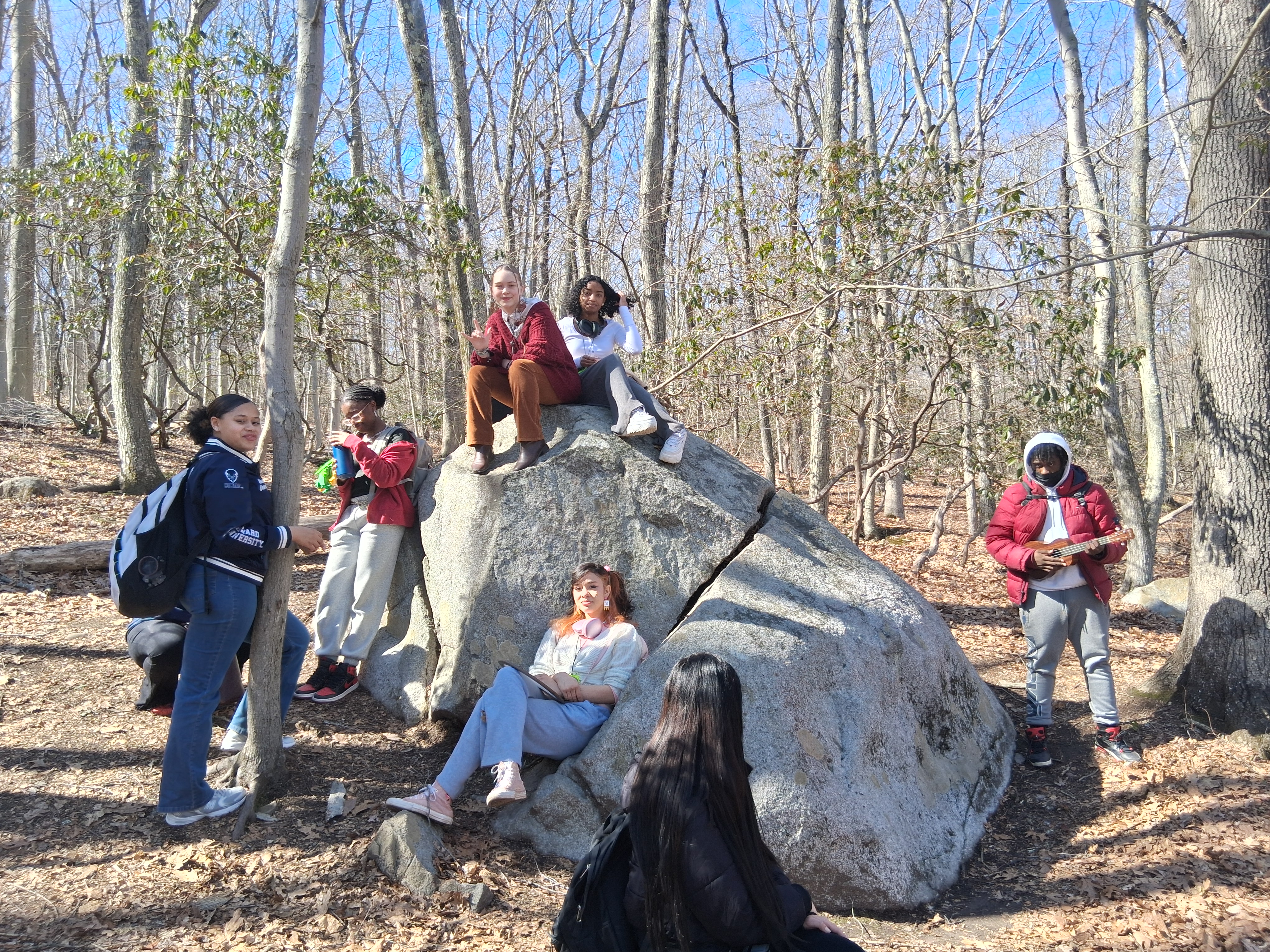
One part of the course we’ve really strengthened this year is the leadership development piece. For instance, everyone in the class is responsible for leading a team building game, and gets feedback from peers on their facilitation skills. It was so amazing to just sit back and watch the students work, demonstrate the skills.
Before they got to the point of facilitating an activity, we build them up. I was leading warm-ups each day, to model that for students. We talked about debriefing and the practice of reflection, and the development of reflective practice over time. We used a deck of cards that includes reflection prompts.
Whenever we do reflections on outdoor experiences, I have students stand up and present in front of the group. They write about their experience first, and then they share in front of the group. This ties back to the health standards that guide the course – students learn about healthy communications skills and styles, and practice these skills.
We emphasized to students that these leadership skills have real value. On your resume, you can share that group facilitation is one of your skills.
